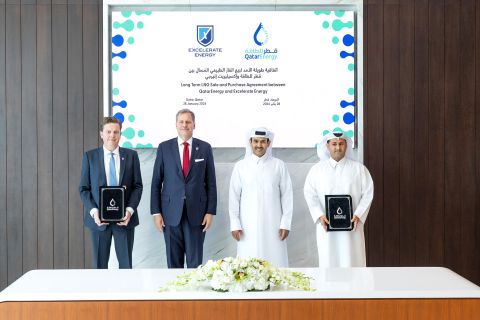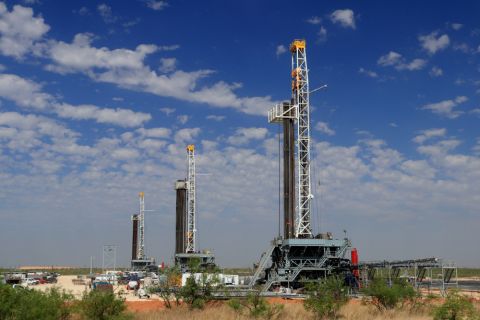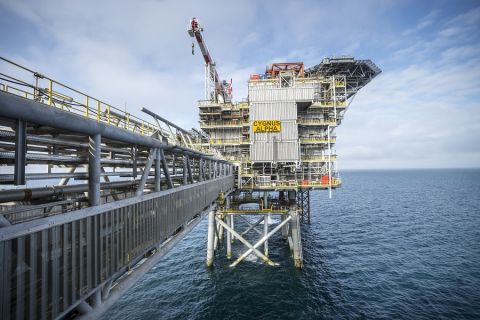A good financing tool can't be kept down. The volumetric production payment (VPP) method of raising capital to purchase producing assets is finding a new home-among investment-banking firms. And, even a large-cap like Apache Corp. is not above using it. The tool, popularized in the 1990s, proved to be a source of low-cost capital often employed by upstart E&P companies, such as Flores & Rucks Inc., which was later renamed Ocean Energy Inc. and sold this year to Devon Energy Corp. for about $5.3 billion. In 1990, that then-nascent producer had an opportunity to buy some company-making Gulf of Mexico assets from Shell Oil Co., so it was looking for low-cost capital. At the same time, the newly formed Enron Energy Capital & Trade Resources was charged with locking in a firm natural gas source to honor Enron's freshly minted 20-year contract to supply gas to the New York Public Power Authority. The VPP was created. Through it, Enron provided Flores & Rucks with cash to make the purchase from Shell; in return, it was guaranteed gas from the assets' production. Over the years, numerous E&P companies used the structure, for both large and small purchases. Then, Enron's energy-finance business closed in 2001, followed by those of energy-trading firms like Aquila, Mirant and other traditional providers of large VPP-backed loans. Two years later, investment bankers are picking up the ball. Rob Lindermanis and Michael Keener at Petrobridge Investment Management LLC report they are working on several deals. Tim Murray at Wells Fargo Energy Finance says his team is involved in one. Royal Bank of Scotland inherited some existing VPP accounts from its purchase of the Shell Capital Inc. portfolio, and is looking to do more, according to Jim McBride, Houston-based managing director. (For more on this, see "NewsWell" in this issue.) Investment bankers are the logical new VPP players, according to McBride, who spent some time at Enron. An arrangement is needed to place the oil and/or gas that is delivered as payment. That is easier today than in 1990; now, hedging is common, and parties with which to hedge are numerous. Investment banker Morgan Stanley is involved in the newest VPP transaction announcement, and it has hedged the more than 68 billion cubic feet of gas equivalent (Bcfe) that will be paid to it during the next four years under the deal. Rather than bring $500 million in cash from a company till and/or a debt or equity offering to Shell E&P Co. in July for a major Gulf of Mexico purchase, Apache brought Morgan Stanley. The banker put up $300 million; Apache brought $200 million from a company cash account. Morgan Stanley gets 68 Bcfe; Apache gets full ownership of the assets, which currently hold 124 billion cubic feet of gas and 6.6 million barrels of oil reserves. (For more on the deal, see "Company Briefs" in this issue.) For Apache, the VPP structure frees its capital-and access to capital-to spend on proving more reserves and increasing production from the fields. "Apache wanted a creative way to structure the purchase, assuring a lowest cost of capital," says Stephen Trauber, Morgan Stanley managing director, energy, Houston. "What Apache really wanted was the upside-the undrilled potential." Morgan Stanley had not done a VPP deal before, but it is anxious to do more. "Strong commodity prices make this an opportune time to do VPPs. It is a unique set of circumstances that make them work, but we have an appetite for them, we have the balance sheet for them, and we have the commodities-trading group to support them." Trauber says he began receiving phone calls from other potential VPP-structure clients as soon as news of the Apache deal was released. "We're talking to a lot of people right now. Again, VPPs work best within unique circumstances, but they can work very well for those circumstances." Jim Flores and Billy Rucks could vouch for that. -Nissa Darbonne, Managing Editor
Recommended Reading
Excelerate Energy, Qatar Sign 15-year LNG Agreement
2024-01-29 - Excelerate agreed to purchase up to 1 million tonnes per anumm of LNG in Bangladesh from QatarEnergy.
UK’s Union Jack Oil to Expand into the Permian
2024-01-29 - In addition to its three mineral royalty acquisitions in the Permian, Union Jack Oil is also looking to expand into Oklahoma via joint ventures with Reach Oil & Gas Inc.
Eni, Vår Energi Wrap Up Acquisition of Neptune Energy Assets
2024-01-31 - Neptune retains its German operations, Vår takes over the Norwegian portfolio and Eni scoops up the rest of the assets under the $4.9 billion deal.
NOG Closes Utica Shale, Delaware Basin Acquisitions
2024-02-05 - Northern Oil and Gas’ Utica deal marks the entry of the non-op E&P in the shale play while it’s Delaware Basin acquisition extends its footprint in the Permian.
California Resources Corp., Aera Energy to Combine in $2.1B Merger
2024-02-07 - The announced combination between California Resources and Aera Energy comes one year after Exxon and Shell closed the sale of Aera to a German asset manager for $4 billion.





